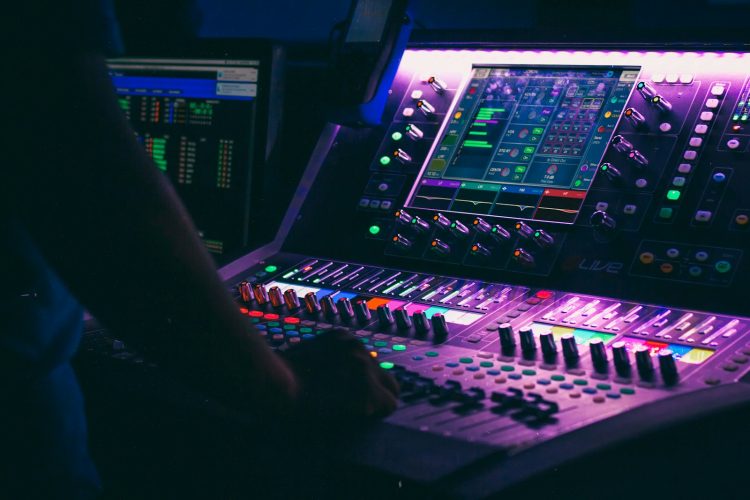When you go to a concert, what do you remember most? The rush of the crowd, the lights, the energy, maybe the performance itself. But there’s one invisible force that holds the entire experience together, something so fundamental that without it, even the most legendary show would fall flat: the sound system.
It’s easy to take for granted. We assume the artist’s voice will soar, the bass will rumble in our chests, and the guitar solos will scream just as they should. But behind every flawless musical moment lies a meticulous blend of technology, engineering, and creativity. Concert sound systems are not just stacks of black boxes—they are highly refined machines of emotional delivery.
In this essay, we’re diving deep into what makes these systems work, why they matter, and how understanding them can completely change how you experience live music. This isn’t just for sound geeks or audio techs—this is for anyone who’s ever felt chills during a chorus or lost themselves in a drop.
The Anatomy of a Concert Sound System
Let’s start with the basics. A concert sound system has one main job: to reproduce sound clearly and powerfully across a large space, ensuring that everyone—from the front row to the nosebleeds—hears the music as it’s meant to be heard.
But doing that well? It’s anything but simple.
At its core, a concert sound system consists of a few key elements:
- Microphones (to capture sound)
- Mixing consoles (to control levels, EQ, effects)
- Amplifiers (to boost signal strength)
- Speakers (to project the sound)
- Monitors (so the performers can hear themselves)
Depending on the size and type of the venue, the configuration and complexity of these components can vary dramatically. A club show might use a modest PA system, while a stadium tour could involve miles of cables, dozens of speaker arrays, and a team of highly trained audio engineers.
Front of House vs. Monitors: Two Worlds, One Goal
In the live sound world, there are two main audio “realms”: Front of House (FOH) and Monitor World.
The FOH engineer is responsible for the sound the audience hears. They mix everything live, adjusting levels on the fly, balancing instruments, vocals, and effects to make sure the crowd gets a full, immersive experience. This is the person making sure the lead vocal cuts through or the bass doesn’t drown everything out.
Meanwhile, the monitor engineer handles what the band hears on stage. That might mean traditional floor monitors (the wedge-shaped speakers near musicians’ feet) or in-ear monitors (IEMs), which are now more common. Without good monitoring, even the best artists can fall out of sync, miss cues, or simply feel disoriented.
These two teams work together seamlessly—FOH focusing on the audience, monitors focusing on the performers—to deliver a cohesive experience.
Line Arrays and Low-End Thunder
If you’ve ever looked up at a towering stack of curved speakers flanking a stage, you’ve seen a line array. These systems are the standard for large-scale concerts because they allow precise control over how sound is distributed.
Instead of blasting audio in every direction, line arrays are designed to deliver consistent coverage across wide and deep venues. Engineers can fine-tune the angle and volume of each speaker cabinet in the array, making sure everyone in the crowd gets balanced sound—even if they’re way off to the side or up in the balcony.
Then there’s the subwoofer—or more often, a dozen or more of them. These are the big boxes handling the lowest frequencies, like kick drums and bass lines. They don’t just make you hear the music, they make you feel it. That chest-thumping sensation during a drop? That’s the power of the low end doing its job.
Acoustics: The Invisible Influence
A perfect sound system can only do so much if the room it’s in works against it. Acoustics—how sound behaves in a space—is one of the biggest challenges in live music.
Outdoor venues tend to be more forgiving because sound can dissipate freely. Indoors, though, reflections, echoes, and standing waves can wreak havoc. That’s why modern concert venues are often designed with sound in mind: curved surfaces to scatter reflections, absorbent panels to deaden harshness, and smart speaker placement to minimize overlap.
On the other hand, many concerts happen in repurposed spaces—historic theaters, arenas, or clubs not originally designed for pristine sound. In those cases, the sound system has to work with the room’s quirks, not against them. It’s part science, part art, and always a balancing act.
Digital Revolution: Mixing with Precision
In the old days, mixing live sound involved massive analog boards with hundreds of knobs and sliders. Today, digital mixing consoles have taken center stage, offering more flexibility, memory, and real-time control than ever before.
With digital boards, engineers can recall entire mix settings at the touch of a button—essential when touring acts need consistency from night to night. They can also use plugins for effects, compression, EQ, and other tools borrowed from the studio world.
But it’s not just the tech that’s evolved—so has the role of the engineer. Modern FOH mixers are almost like co-performers, adjusting sound dynamically as the show evolves, syncing effects to lighting cues, and crafting moments of emotional impact with a flick of a fader.
Wireless Wonders and IEMs
Today’s stages are practically wireless jungles. Guitars, microphones, in-ear monitors—all of it is untethered. Wireless tech allows for cleaner stages, more mobility, and better overall control, but it comes with its own set of challenges: signal interference, frequency coordination, and dropouts.
In-ear monitors (IEMs) have revolutionized how artists perform. Instead of relying on floor wedges that blast sound up from the stage (and often bleed into microphones), IEMs provide a personalized mix directly into the artist’s ears. They reduce stage volume, improve clarity, and help preserve hearing over time.
For artists who jump, spin, or sprint across the stage, wireless IEMs are a literal game-changer.
The Human Element: The Sound Crew
For all the high-end gear and clever engineering, concert sound still comes down to people—trained professionals who make the tech sing.
From system engineers who tune the venue before doors open, to FOH mixers balancing chaos in real time, to techs who sprint backstage fixing a dead mic mid-set, the crew is the unsung hero of any live show. They troubleshoot, adapt, and problem-solve at lightning speed, often invisible to the crowd but essential to the experience.
A great sound team can elevate a good performance into something unforgettable. A bad one? Well, let’s just say even the best artists can sound like garage bands without the right support.
Why It Matters
So why should you care about all this? Because once you understand what goes into a concert sound system, you start to appreciate live music on a whole new level.
The clarity you hear, the thump you feel, the way vocals glide over the mix—it’s all intentional. The difference between a muddy mess and a magical moment often comes down to the precision of the audio crew and the quality of the sound system.
Next time you’re at a show, look around. Notice the speaker setups, the way the mix shifts between songs, how the sound changes depending on where you stand. Talk to someone in the crew if you get the chance. You’ll realize there’s a whole other layer of artistry happening behind the scenes.





